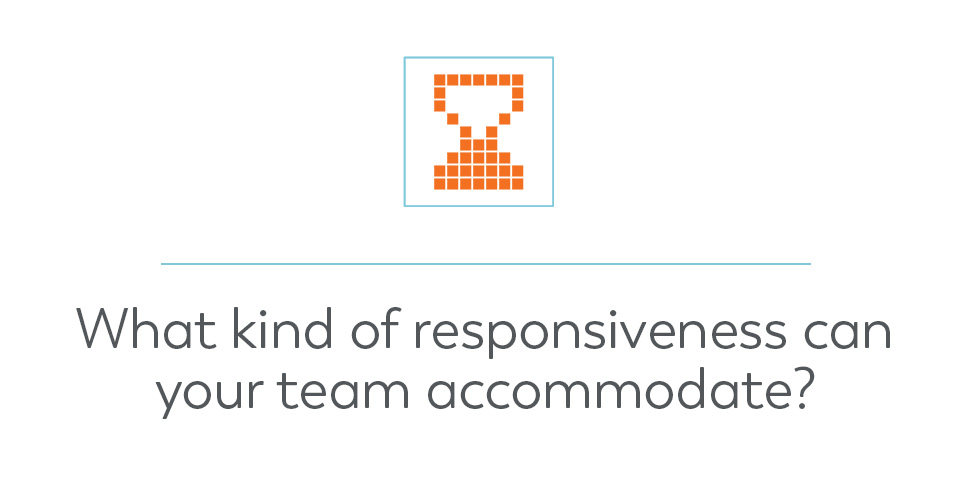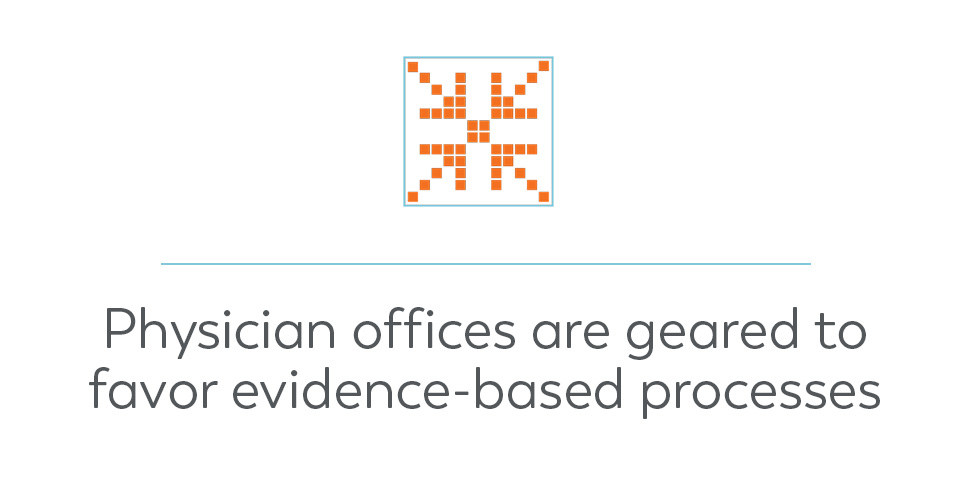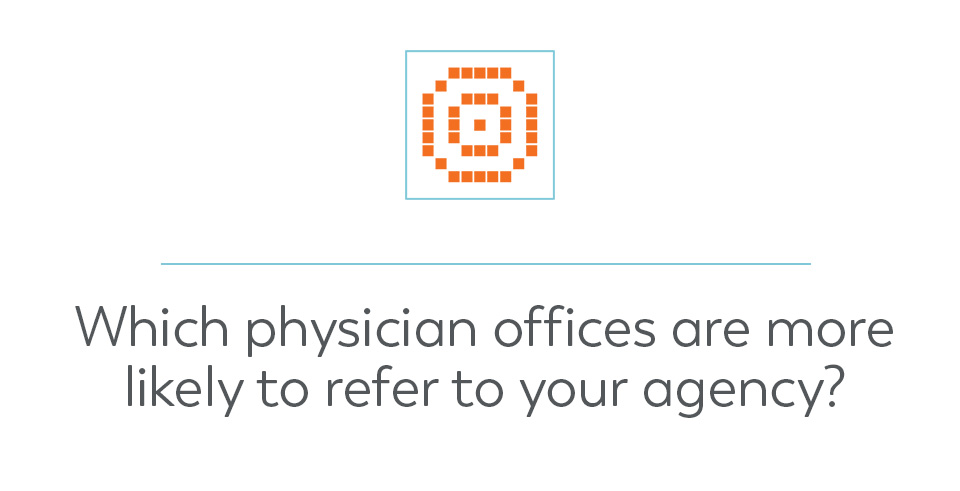How to Resonate with Physicians’ Offices and Grow Referrals
I have some bad news and some good news. Both are results from a recent national survey of physician office managers regarding their referral practices to providers of home-based care.
The bad news is that an average of 81% said they see little to no difference among providers of hospice, home health and palliative care. The good news is that the study, conducted by Transcend Strategy Group, revealed preferences and behaviors of these referrers that can help you unlock messages to resonate with them and help you grow referrals.
You can download the full report for review. Highlights of the survey findings include these helpful tips:
Create a specialty positioning.
Less than half of physician offices refer to a specific provider of hospice, palliative care or home health services. Yet 73% say they frequently refer to particular “specialists.”
Granted, the referrers are thinking of “specialists” in the traditional sense of medical focus – oncology, cardiology, pulmonology and others. But can you create a position for your agency that helps physician offices see you as a specialist? You could emphasize being specialists in pain and symptom management, specialists in end-of-life care, or other categories.

However, your positioning and differentiation can be even stronger if you make the case for being specialists in outcomes, particularly related to specific disease states. To build and promote this positioning, you probably will need to collect and mine data differently than you are currently doing.
For example, patients with COPD and CHF often have problems managing their symptoms at home, leading to ER visits and hospital admissions or readmissions. Can you build data to show that your patients with these conditions have fewer ER visits, fewer hospital admissions, and higher satisfaction scores compared to no support at home or care from your competitors?
If you build a case with such data, it also will help you target not only general practitioner physicians but specialists for the relevant diseases. Specialists frequently refer to other specialists!
Promise timely response – then deliver on that promise.
67% of survey participants ranked timely response to referrals as the first or second most important attribute of a provider. Since about 40% of physician office managers said they offer a list of providers to their patients, if your agency doesn’t respond quickly to a referral, they may go to the next name on the list in a heartbeat.
Before making any promises, first determine how your audiences define “timely.” Our experience has taught us that many referrers expect at least some kind of acknowledgement of receiving the referral within one hour – if not a follow-up call to start processing the referral within that time frame.

What kind of responsiveness can your team accommodate? Especially with today’s technology, can you monitor referrals around the clock? Can you set up a system to respond quickly to all referrals? Could you even offer a “guarantee” of a time frame within which your team will respond?
When a physician’s office makes a referral, they are ready to pass along that patient ASAP. If you’re the agency referrers know they can count on for rapid response, you increase your likelihood of more frequent referrals.
Educate physician office staff through their most preferred method.
When asked the best way to educate or update their staff, about half of survey participants said in-service sessions are their top preference by a significant margin.
Of course, we all know actually getting an appointment to host an in-service session is much easier said than done. COVID-19 squelched most, if not all, in-person meetings – but it also opened opportunities to communicate by video chats.
Now is the time to reevaluate and innovate on possible ways to conduct in-service education. Would your referrers be more open to brief video sessions (30 minutes or less)? Could you create a library of on-demand videos that can educate at the user’s convenience? Are you set up to offer Continuing Education credits for such sessions as a further enticement?

Even before you figure out the best methods to encourage attendance for in-service offerings, what content will be an attractive draw? Again, strong data can be the key. Physician offices are geared to favor evidence-based processes. If you develop a data story as suggested earlier in this article, you can offer outcomes-based education for best practices. Imagine being able to promote a topic such as “Reduce your patients’ hospital admissions by 28% through home-based palliative care.”
Prioritize and target the most promising prospects.
After you’ve developed messages that will resonate with physician offices, how will you make sure those messages reach your target audience?
Many of our clients tell us it’s harder than ever to get in-person meetings with physicians – or even their office managers. In fact, we often hear that physicians our clients have long relationships with are retiring, and our clients are having to start from scratch in developing relationships with younger physicians coming into the practices.
Of course, your agency can’t be all things to all referrers. So be strategic about who you target and double down on reaching them instead of shot-gunning messages to a broad physician community.

Which physician offices are more likely to refer to your agency? Which doctors are part of a health system’s physicians’ group and are instructed or encouraged to refer to services that directly compete with yours within their own system?
Can you develop specialties by disease state and target both family practices and specialists that will be more receptive to your offerings?
After you narrow down your target audiences, you can employ detailed strategies and tactics to reach them more effectively. Here are a few ways:
- Apply account-based marketing (ABM) technology to laser-target prime prospects with tailored digital ads that will reach your audiences where they live on-line.
- Purchase a strong email list and send customized emails with messages that will snare recipients’ attention.
- Buy a robust mailing list and send a direct mail series with messages that resonate. So much of today’s communication is done electronically that receiving a tangible item through “snail mail” can break through and get noticed.
Once again, basing your messages on data that makes a compelling case for better patient outcomes can be the spark to ignite interest and interaction with your referrer prospects.
Need help thinking through our recommendations and putting together an effective referrer marketing strategy? Transcend is ready to partner with you. Email me at stan@transcend-strategy.com to discuss the possibilities.











